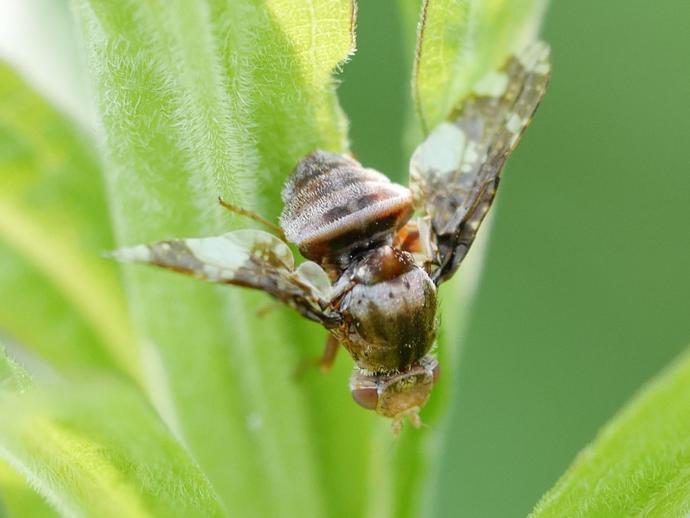February 10, 2021
Ben is away from the museum this week, so we're reaching into the archives for today's #BenInNature update presented by our friends at Carter Bank & Trust! The following post was originally published on May 21, 2020.
Pop quiz: What does the goldenrod gall fly (Eurosta solidaginis) have in common with your car? The answer: They both contain antifreeze! (Also, I guess they both have at least one antenna.)
These small flies can be found across the U.S., generally in the vicinity of goldenrod plants. They lay their eggs near the new buds of a goldenrod, and when the eggs hatch, the larvae crawl below the bud and induce the plant to form a gall (a hard chamber made of plant tissue) around themselves. They stay inside the gall until they emerge in the spring as adults.
However, the gall doesn't offer much in the way of insulation for the soft-bodied larvae, and they sometimes have to endure long, hard winters. Just how they accomplish that has been the subject of a great deal of research. It seems that once temperatures start dropping, the fly larvae begin producing glycerol and sorbitol. Both of these compounds serve as a kind of antifreeze and lower the melting point of the larvae's body fluids, which prevents them from freezing solid (Fun fact: glycerol was once used as an automotive antifreeze until it was replaced by ethylene glycol, and while it's not quite as effective as ethylene glycol, it's non-toxic).
Goldenrod gall fly larvae also serve as an important food source for a number of birds, such as the black-capped chickadee and the downy woodpecker. When food becomes scarce in the winter, these birds will often break open goldenrod galls and eat the tasty larvae within.
Thank you to VMNH Executive Director Dr. Joe Keiper for identifying this guy for me!
ABOUT #BenInNature
Social distancing can be difficult, but it presents a great opportunity to become reacquainted with nature. In this series of posts, Administrator of Science Ben Williams ventures outdoors to record a snapshot of the unique sights that can be found in the natural world. New updates are posted Monday - Friday, with previous posts highlighted on the weekends. This series of posts is made possible thanks to the support of VMNH Corporate Partner Carter Bank & Trust (www.cbtcares.com)
NATURE PHOTO IDENTIFICATIONS
If you discover something in nature that you would like help identifying, be sure to message us right here on Facebook with a picture (please include location and date of picture) and we'll have our experts help you identify it!

 Hours & Admissions
Hours & Admissions Directions
Directions

